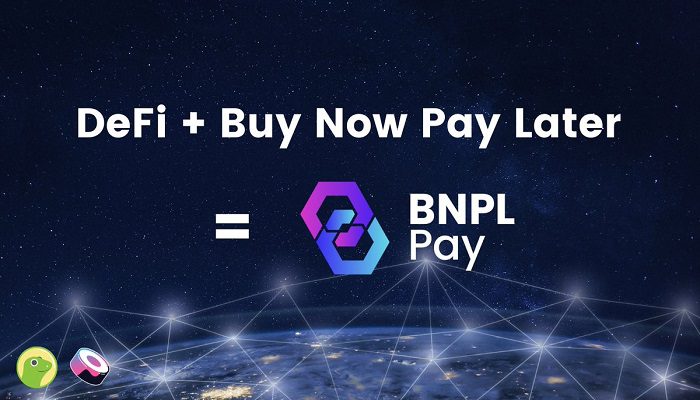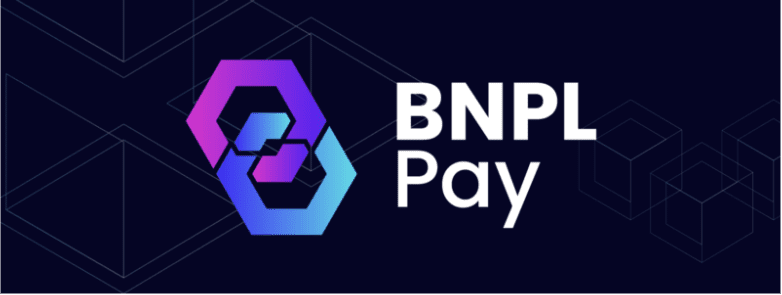BNPL (Buy Now, Pay Later) is a decentralized lending protocol that has been designed to provide much-needed credit solutions to consumers without access to adequate capital.
The team at BNPL Pay explains that they aim to address the problems presented by uncollateralized borrowing via an innovative design that leverages a decentralized network of (centralized) Banking Nodes. With their unique protocol, anyone has the opportunity to become a bank and anyone may apply for a loan. The initiative intends to enable greater financial inclusion by providing accessible credit solutions to people who may have been excluded from the traditional financial system.
During the past few years, the collateralized lending sector within the nascent DeFi space has grown tremendously. Protocols like Aave (AAVE) and Compound (COMP) have been offering financial services that are being widely-adopted across the crypto and blockchain space.
However, the team at BNPL Pay thinks that these platforms have not been able to cater to the requirements of consumers who don’t have access to capital. Although the BNPL Pay developers acknowledge that these platforms are offering great value, they still believe the largest opportunity lies in the credit sector. According to BNPL, this is an area that most decentralized protocols have failed to serve properly.
While there might have been attempts in the past at addressing the requirements of the financially-undeserved, the vast majority of DeFi protocols have depended far too heavily on the reputation or the creditworthiness of borrowers — which is something only the highly-capitalized entities in the space actually have.
Using CeDeFi Model to Provide the Maximum Number of Loans
Because of these issues, most protocols have not been effective at serving the needs of those who require credit services the most. With BNPL Pay’s unique incentive model, they aim to offer an improved approach to serving the largest number of potential borrowers.
As explained by its developers, the BNPL Protocol makes use of a decentralized network of centralized banking nodes (CeDeFi) in order to issue the maximum number of loans possible.
Traditional credit facilities have been known to place significant entry barriers, because of their strict regulations. They’ve generally operated in environments of minimal competition, which has led to “minimal innovation.” The average interest rate on traditional credit cards can be as high as 20%, which may lead to the borrower having to pay back a very large amount. In many cases, people are unable to make timely payments and this leads to their credit score declining.
This creates a vicious cycle for the consumer who is unable to access credit services in the future, because of their low credit scores. It has become clear to financial experts that we need a much better system that can serve the needs of consumers from a wide range of financial backgrounds.
Enabling Financial Inclusion by Democratizing the Lending Process
The BNPL protocol has been designed to provide an arguably better model, which allows just about anyone to launch a banking node, and these nodes start competing for capital from lenders and for the loan fulfillment of potential borrowers. According to the BNPL Pay team, this type of system will be able to provide maximum utility for borrowers and lenders.
BNPL Pay believes that the solution to the complex problem of providing reliable credit may be addressed by supporting open competition and free-market decisions. That’s why they have developed a protocol to enable banking nodes to have complete autonomy in their operations. They also offer lenders full transparency of each banking node’s track record and various other performance metrics.
The BNPL Pay team further notes that they intend to merge the borderless, permissionless Ethereum ecosystem with the fragment rules of the legal world. They’ve selected a CeDeFi model which is adequately decentralized, since it allows anyone to set up nodes or lend funds.
As noted by BNPL, the nodes are centralized so that they can delegate the tasks for the legal world and service loans based on their abilities to address counterparty risk. The BNPL Pay team has developed an innovative model that aims to reward or penalize participants, depending on the stakeholder.
Node operators have to stake at least 1 million BNPL tokens, which means they will need to have “skin in the game” to manage capital. Operators get rewarded with a certain percentage of interest that gets accrued by their respective pools.




































